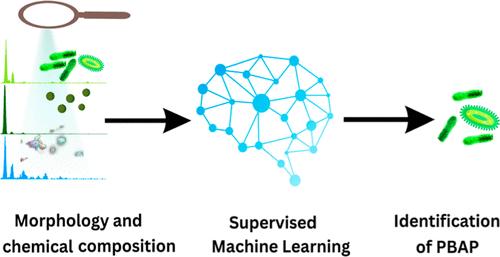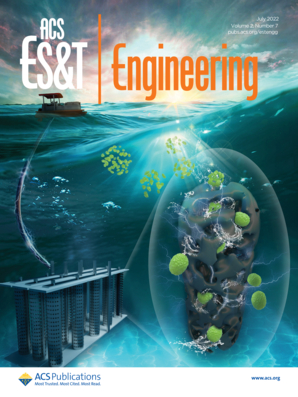利用机器学习和单粒子测量增强对初级生物气溶胶粒子的检测
IF 6.7
Q1 ENGINEERING, ENVIRONMENTAL
引用次数: 0
摘要
由于原生生物气溶胶粒子(PBAPs)与大气中的其他碳质粒子相似,因此使用分析技术准确识别这些粒子存在固有的挑战。我们通过将单颗粒测量与先进的监督机器学习(SML)技术相结合,研究了一种检测 PBAP 的增强型方法。我们分析了各种环境中的环境颗粒和实验室生成的标准颗粒,在传统的基于规则的方法和聚类方法中重点关注化学成分,在 SML 方法、神经网络和 XGBoost 中加入形态特征以提高准确性。这项研究表明,在量化 PBAP 方面,SML 方法优于传统方法,在精确度、召回率、F1 分数和准确度方面都有显著提高,使检测到的 PBAP 数量至少增加了 19%。与传统方法相比,所提出的基于 XGBoost 的 SML 模型在对来自不同地理位置的盲数据集进行 PBAP 分类时,展示了其适应性。对农业用地和亚马逊热带雨林的两个实地案例进行了研究,这两个地方分别代表了相对较低和较高的 PBAP 浓度,XGBoost 检测到的 PBAP 始终是传统方法的 3.5 倍。精确检测大气中的多溴联苯醚可大大改善对其气候影响的预测。本文章由计算机程序翻译,如有差异,请以英文原文为准。

Enhanced Detection of Primary Biological Aerosol Particles Using Machine Learning and Single-Particle Measurement
Accurately identifying primary biological aerosol particles (PBAPs) using analytical techniques poses inherent challenges due to their resemblance to other atmospheric carbonaceous particles. We present a study of an enhanced method for detecting PBAPs by combining single-particle measurement with advanced supervised machine learning (SML) techniques. We analyzed ambient particles from a variety of environments and lab-generated standards, focusing on chemical composition for traditional rule-based and clustering approaches and incorporating morphological features into the SML approaches, neural networks and XGBoost, for improved accuracy. This study demonstrates that SML methods outperform traditional methods in quantifying PBAPs, achieving significant improvements in precision, recall, F1-score, and accuracy, leading to an increased number of detected PBAPs by at least 19%. The adaptability of the proposed XGBoost-based SML model is showcased in comparison to traditional methods in categorizing PBAPs for blind data sets from different geographical locations. Two field case studies were investigated, over agricultural land and Amazonia rain forest, representing relatively low and high concentrations of PBAPs, respectively, where XGBoost consistently detected up to 3.5 times more PBAPs than traditional methods. Precise detection of PBAPs in the atmosphere could significantly improve the prediction of climatic impacts by them.
求助全文
通过发布文献求助,成功后即可免费获取论文全文。
去求助
来源期刊

ACS ES&T engineering
ENGINEERING, ENVIRONMENTAL-
CiteScore
8.50
自引率
0.00%
发文量
0
期刊介绍:
ACS ES&T Engineering publishes impactful research and review articles across all realms of environmental technology and engineering, employing a rigorous peer-review process. As a specialized journal, it aims to provide an international platform for research and innovation, inviting contributions on materials technologies, processes, data analytics, and engineering systems that can effectively manage, protect, and remediate air, water, and soil quality, as well as treat wastes and recover resources.
The journal encourages research that supports informed decision-making within complex engineered systems and is grounded in mechanistic science and analytics, describing intricate environmental engineering systems. It considers papers presenting novel advancements, spanning from laboratory discovery to field-based application. However, case or demonstration studies lacking significant scientific advancements and technological innovations are not within its scope.
Contributions containing experimental and/or theoretical methods, rooted in engineering principles and integrated with knowledge from other disciplines, are welcomed.
 求助内容:
求助内容: 应助结果提醒方式:
应助结果提醒方式:


